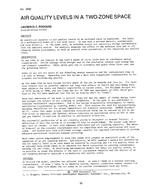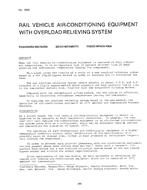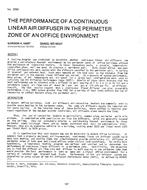-
-
Available Formats
- Options
- Availability
- Priced From ( in USD )
-
Available Formats
-
- Immediate download
- $16.00
- Add to Cart
Customers Who Bought This Also Bought
-

2609 -- Field Measurements of a Mobile Home Unitary Heat ...
Priced From $16.00 -

2592 -- Air Quality Levels in a Two-Zone Space
Priced From $16.00 -

2605 -- Rail Vehicle Air-Conditioning Equipment with Over...
Priced From $16.00 -

2594 -- The Performance of a Continuous Linear Air Diffus...
Priced From $16.00
About This Item
Full Description
In this paper it is shown that the radiation interchange algorithms of the NBSLD and BLAST loads programs can be significantly improved. It is proposed that the radiant interchange in a room can be adequately modeled by assuming that each surface radiated to a fictitious surface which has an area, emissivity, and temperature giving about the same heat transfer from the surface as in the real multi-surface case. This approximation leads to a more accurate heat balance and can be used for large numbers of surfaces without greatly increasing computation time. The algorithm will make it computationally practical to account for previously neglected effects such as nonlinear, nonconstant interior convection coefficients and heat conduction between simultaneously simulated rooms. It would also be possible to do calculations of room loads and temperatures as they are affected by the operation of the air distribution system.





